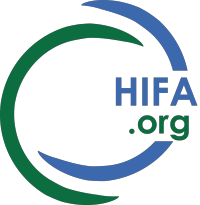'Conventionally used coverage measures do not reflect the quality of care. Effective coverage assesses the extent to which health care services deliver potential health gains to the population by integrating concepts of utilization, need, and quality.' This systematic review emphasises the key difference between crude coverage and effective coverage.
CITATION: Evaluations of Effective Coverage of Maternal and Child Health Services: A Systematic Review
Aster Ferede Gebremedhin, Angela Dawson, Andrew Hayen
Health Policy and Planning, 2022 https://doi.org/10.1093/heapol/czac034
ABSTRACT
Conventionally used coverage measures do not reflect the quality of care. Effective coverage assesses the extent to which health care services deliver potential health gains to the population by integrating concepts of utilization, need, and quality. We aimed to conduct a systematic review of studies evaluating effective coverage of maternal and child health services, quality measurement strategies, and disparities across wealth quantiles. A systematic search was performed in six electronic databases (MEDLINE, EMBASE, CINAHL, Scopus, Web of Science, and Maternity and Infant Care) and grey literature. We also undertook a hand search of references. We developed search terms having no restrictions based on publication period, country, or language. We included studies, which reported effective coverage estimates based on the World Health Organization framework of measuring effective coverage. Twenty-seven studies, all from low and middle-income settings (49 countries), met the criteria and were included in the narrative synthesis of the results. Maternal and child health intervention(s) and program(s) were assessed either at an individual level or as an aggregated measure of health system performance, or both. The effective coverage ranged from 0% for postpartum care to 95% for breastfeeding. When crude coverage measures were adjusted to account for the quality of care, the effective coverage values turned lower. The gap between crude coverage and effective coverage was as high as 86%, and it signified a low quality of care. The assessment of quality of care addressed structural, process, and outcome domains, individually or combined. The wealthiest 20% had higher effective coverage of services than the poorest 20%, an inequitable distribution of coverage. More efforts are needed to improve the quality of maternal and child health services and to eliminate the disparities. Moreover, considering multiple dimensions of quality and the use of standard measurements are recommended to monitor coverage effectively.
Neil Pakenham-Walsh, Global Coordinator HIFA, www.hifa.org neil@hifa.org

